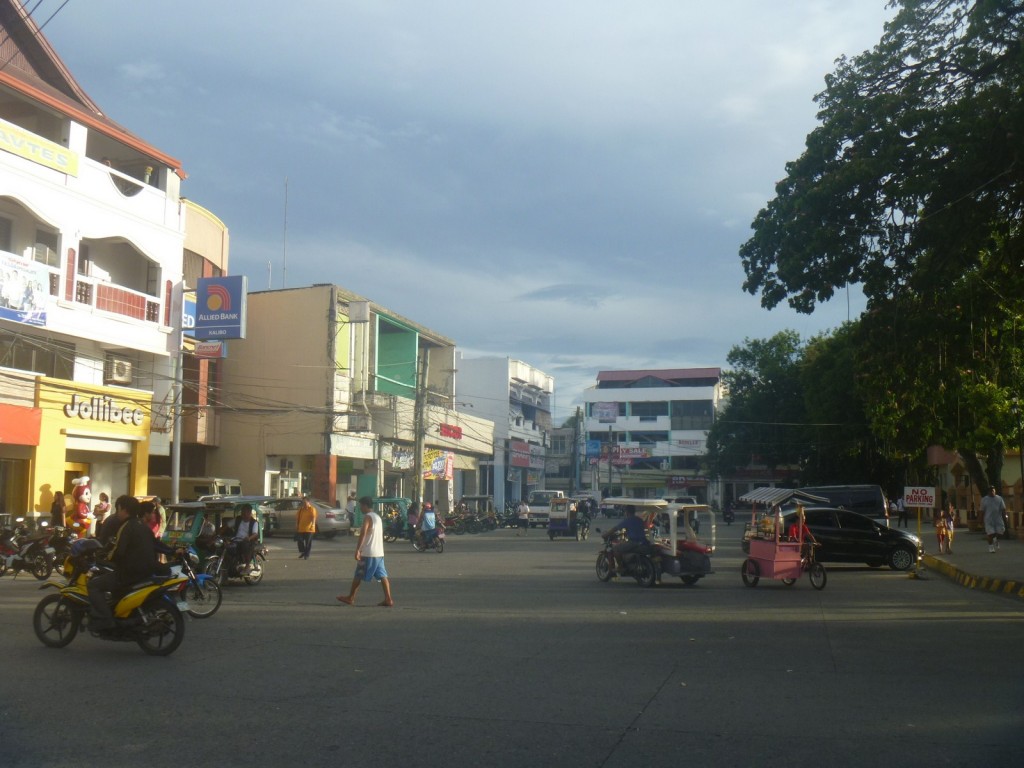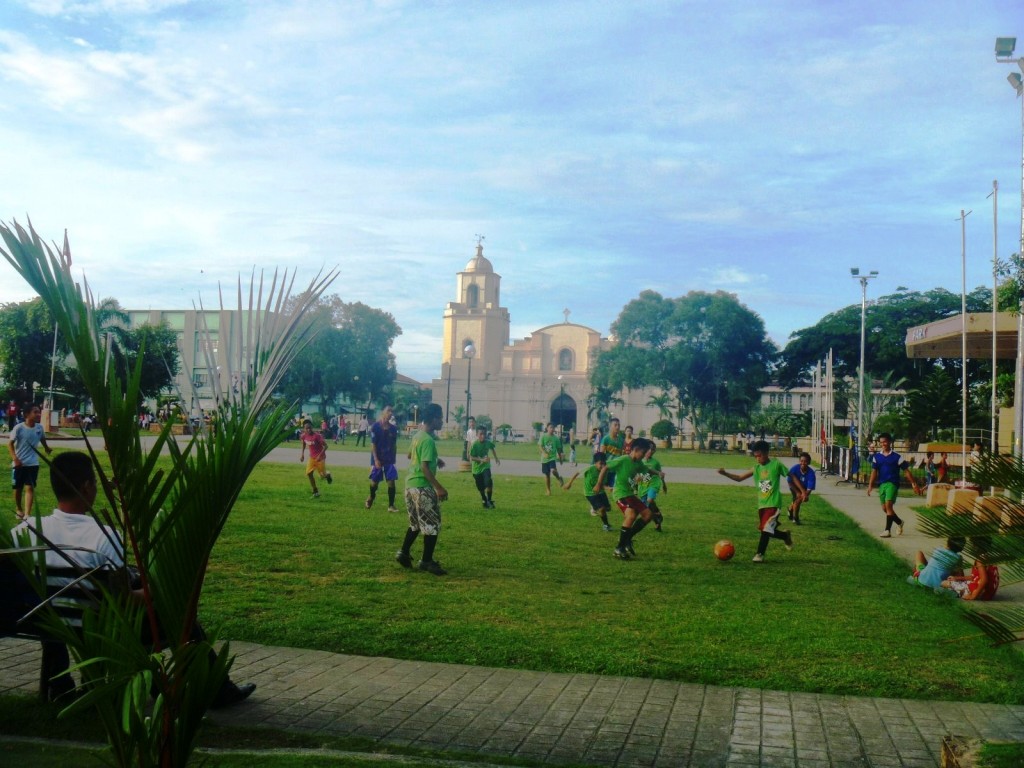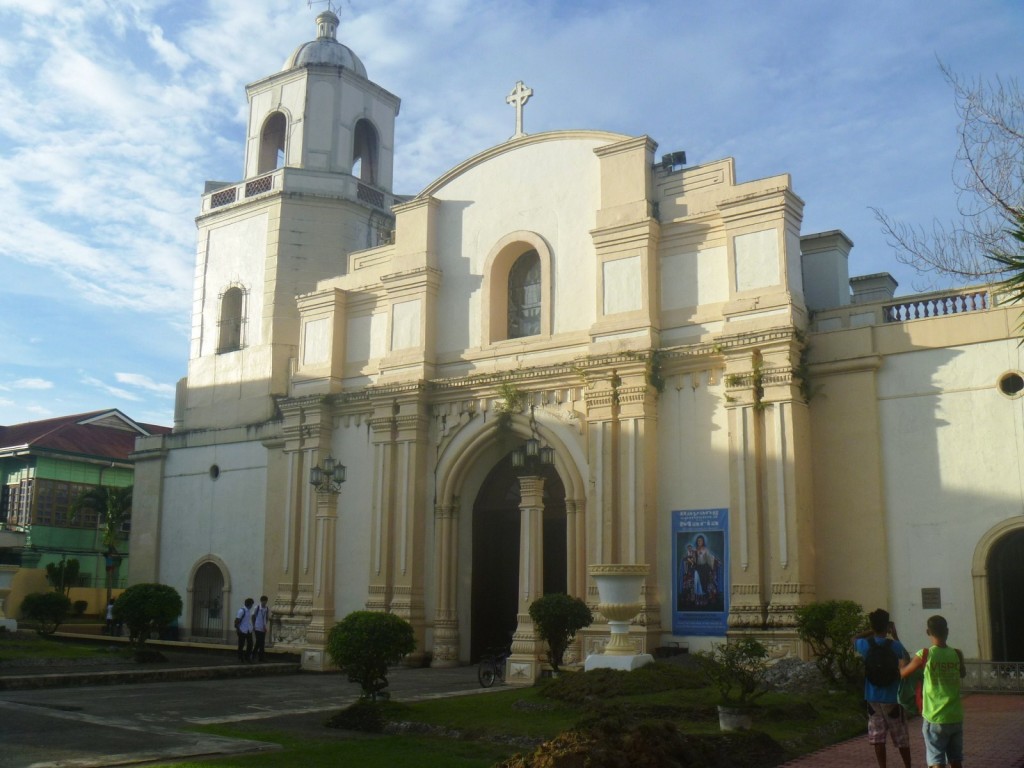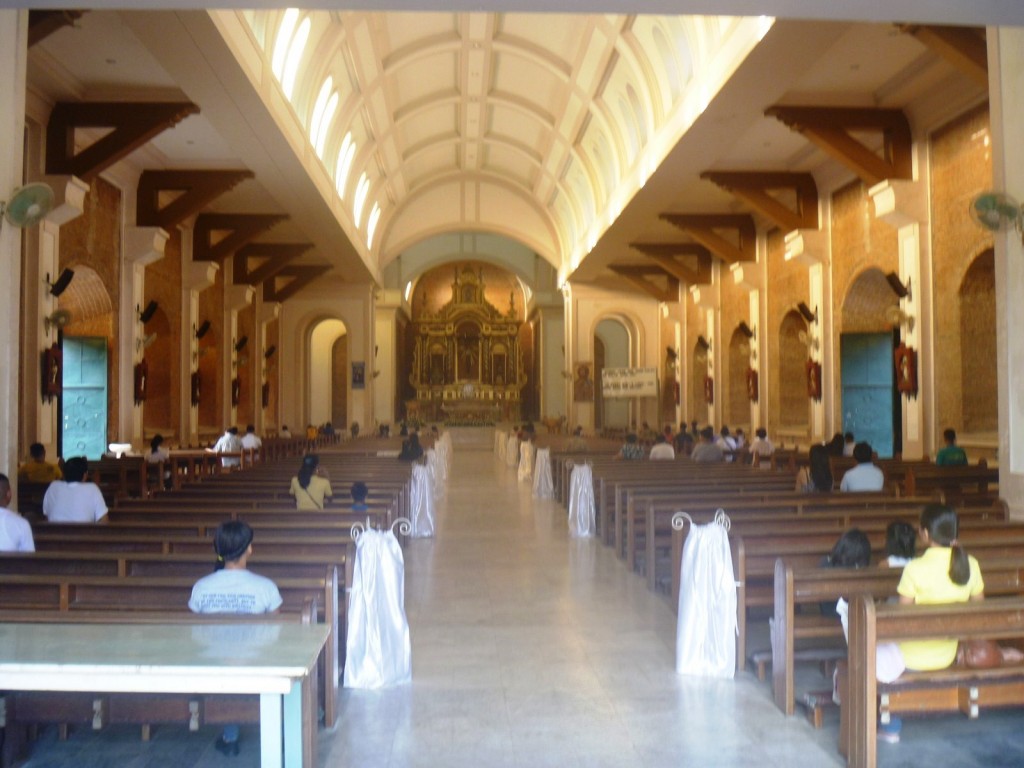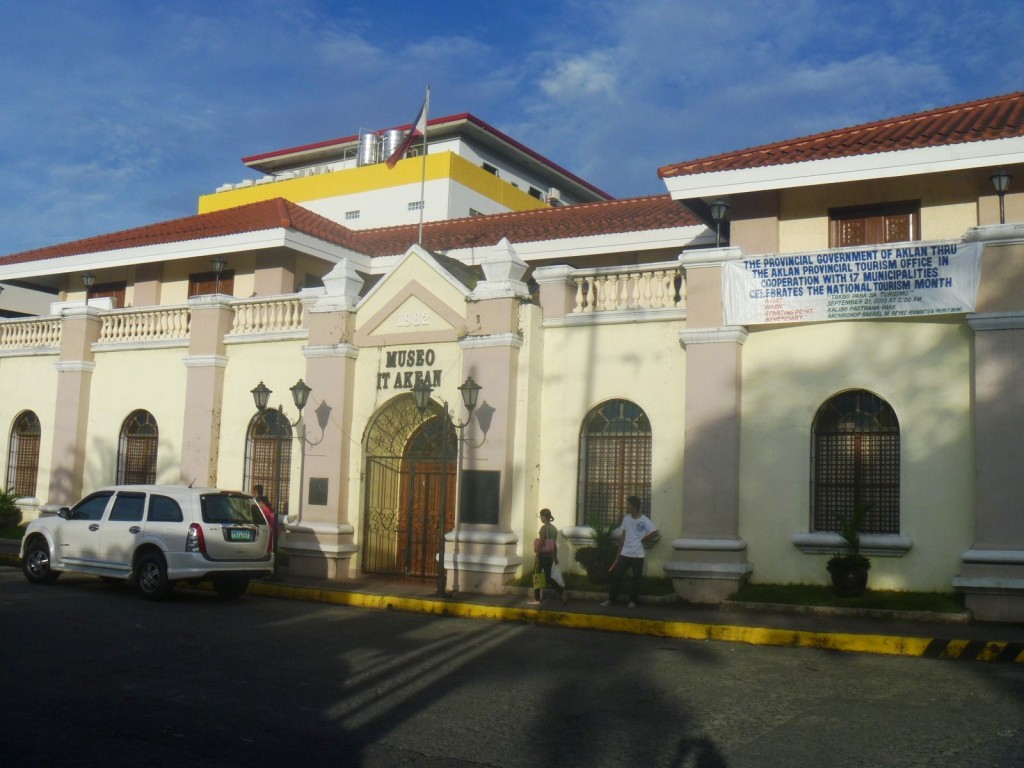I was slated to attend a press conference launching the 75th Oktoberfest at the Sofitel Philippine Plaza Manila but, as it was still early, I decided to park my Toyota Revo at the nearby, Parthenon-like Manila Film Center at the Cultural Center of the Philippines (CCP) Complex. Today, it is the venue, since November 2012 (and from December 10, 2001 until its lease expired in 2009), of the Amazing Show, a Las Vegas-like song and dance extravaganza produced by Amazing Philippines Theater where all the performers are transgenders. A huge “Amazing Show” sign is now emblazoned on its facade. It is popular with Korean tourists.
| The former Manila Film Center |
The huge lot in front of the center is all to familiar to me and my thesis mates (Cecilio “Ces” Carandang, Alfredo “Al” de Jesus, Clarencio “Shoti” Gonzales and Jane Dy) as it was our proposed site for U.P. College of Architecture thesis proposal – a National Museum Complex. I have also been inside the center which, in its heyday, housed 6 360-degree theaters, 6 preview rooms for the Board of Censors, a film archive (to use the then little-known Digital Storage) and a number of offices.
| Our proposed National Museum Complex site |
Just last February 19, a 3-hour fire, which started past 7 PM, damaged the back of the theater but caused no casualties. Damage was placed at around PhP1.2 million. This was not the center’s first brush with disaster as the center is more famous for the tragedy that happened during its construction, as well as its ghost stories, rather than for anything else.
| The left side facade |
The center had its beginnings in 1981 when then First Lady Imelda R. Marcos had the grandiose notion of turning Manila into the “Cannes of the Pacific” by starting the Manila International Film Festival (MIFF) which she slated to start on January 18, 1982. Her last major project at the CCP, Imelda passed over my late uncle and National Artist (for Architecture) Leandro V. Locson and, instead, chose Arch. Froilan Hong, also our professor in U.P., to do the design. Imelda wanted to recapture, through the Manila Film Center, the grandeur of Athen’s Parthenon through the application of modernist abstraction and vernacular intervention. In fact, its design module was based on the Golden Section, a Classical proportional device.
| The left side colonnade |
The building’s foundation, supported on more than 900 piles reaching the bedrock about 120 ft. below, was set on newly reclaimed land near Manila Bay. Since the construction deadline was tight, 4,000 workers were employed to work, round the clock, in 3 shifts. About 1,000 workers finished the lobby in 72 hours, normally a job entailing 6 weeks of labor. Then, tragedy struck on November 17, 1981, shortly before 3 AM, when scaffolding and wooden support for part of the second basement collapsed, causing at least 169 graveyard shift workers to fall and be buried or trapped under wet, quick-drying cement.
| Front collonnade |
Amid a blanket of security, rescuers were only allowed to go inside the accident site 9 hours after the collapse. One unanswered question is “In the rush to complete the project in time for the MIFF, was fresh concrete poured over the dead workers and construction continued?”The Film Palace was indeed finished just 15 mins. before the opening amidst clouds of thick construction dust. The unfinished roof was temporarily covered by hundreds of square meters of fabric. On opening night, the first film (out of 17) shown in the theater was the movie “Gandhi.” India’s entry, “36 Chowringhee Lane” would later claim “Best Picture” while Lyudmila Gurchenko won as “Best Actress,” Bruno Lawrence as “Best Actor” and Goran Markovic as “Best Director.”
| The damaged pavement |
The MIFF was to last another year but, instead of quality films, pornographic films were shown in an effort to gain a larger audience and, perhaps, to make up for the first festival’s financial losses. Later, in 1984, I would watch the premiere of Tikoy Aguiluz’ startling, controversial but highly-acclaimed first full-length film “Boatman” (Ang Bangkero), in its uncut version, at this very venue. Peque Gallaga’s excellent and equally erotic thriller “Scorpio Nights” was also shown here. After the catastrophic, 7.7 magnitude July 16, 1990 earthquake that struck Manila and the rest of Luzon, the Film Center was abandoned due to it becoming unstable.
| UniCellBio Clinic & Lab |
Though now being reused (it also houses the UniCellBio Manila Clinic & Lab), the building still remains in a sorry state of disrepair, with broken glass panels and cracked, weed infested pavements, making the place incredibly spooky. In fact, there are stories of ghostly manifestations within the building that include apparitions; hearing of cries and moans; bleeding walls; and hands sticking out from under doors. I would have liked to explore the condition of the building in more detail but it is now off limits to promenaders and joggers. If only its 30-year old walls would talk, it would have a sinister and ghostly story to tell…..

